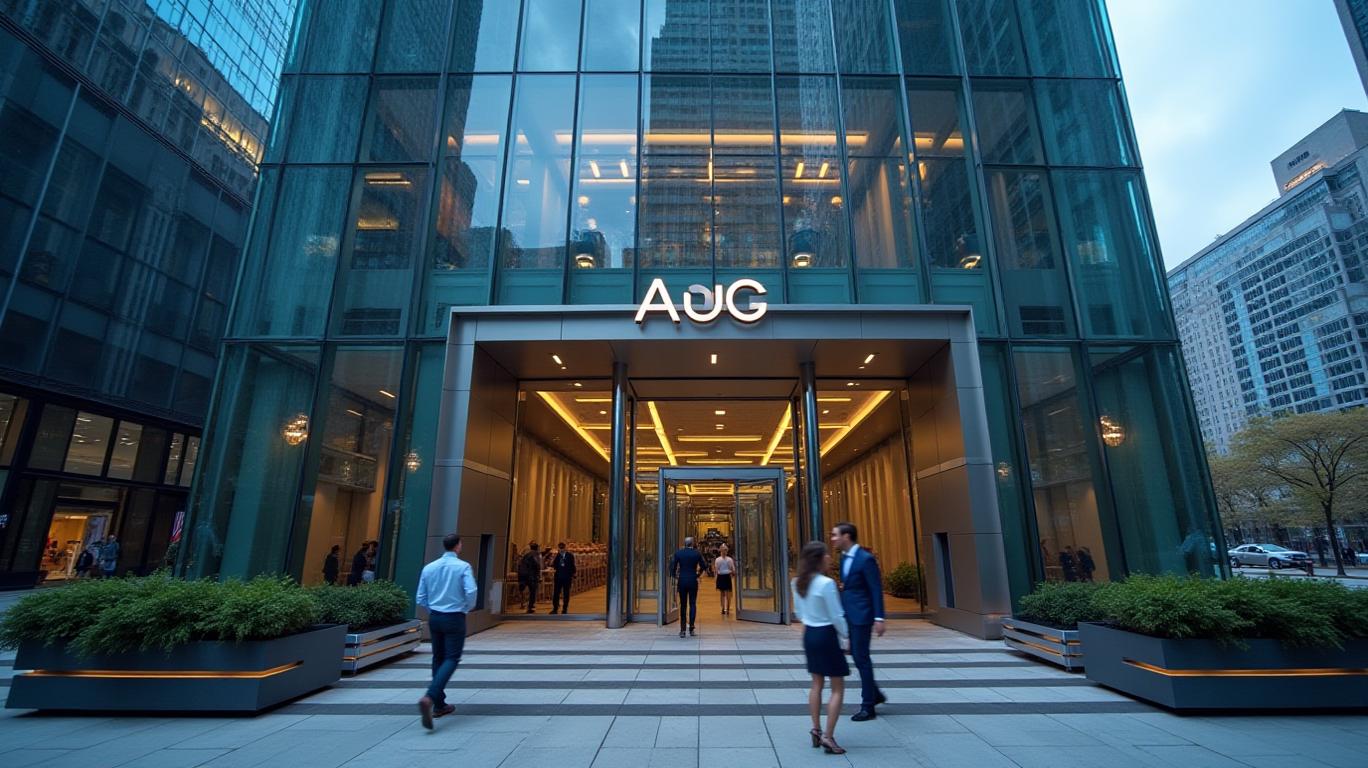Arthur J. Gallagher & Co. (AJG): Navigating Growth and Efficiency in a Volatile Insurance Landscape
Arthur J. Gallagher & Co. (AJG), a leading global insurance brokerage and risk management firm, delivered a mixed yet strategically compelling performance in its Q1 2025 earnings. While revenue fell modestly short of expectations, the company’s focus on operational discipline, disciplined acquisitions, and organic growth drivers positioned it to capitalize on industry dynamics. Let’s dissect the results and their implications for investors.
Financial Highlights: A Tale of Two Metrics
AJG’s Q1 revenue rose 14.4% year-over-year (YoY) to $3.68 billion, but this missed analyst estimates by 1.75%, reflecting softer-than-expected fee revenue and headwinds in certain segments. However, adjusted diluted EPS surged 6.4% to $3.67, comfortably beating the consensus by 2.8%. The divergence highlights management’s success in managing costs even as revenue growth faced hurdles.

The brokerage segment drove much of the momentum, with supplemental revenues jumping 21.3% YoY, outperforming estimates. Meanwhile, the risk management segment struggled, posting a 5.8% revenue increase that still lagged analyst forecasts due to elevated compensation costs (61.9% ratio vs. 56.9% expected).
Strategic Growth: Acquisitions and Organic Momentum
AJG’s acquisition strategy remains its cornerstone. In Q1 alone, the company completed 11 mergers, adding ~$100 million in annualized revenue. The $250 million Woodruff Sawyer acquisition in April 2025 further strengthens its brokerage platform, while the pending $13.45 billion AssuredPartners deal—set to close in H2 2025—will make AJG the second-largest U.S. brokerage firm.
Organic growth also shone, with 9% revenue expansion fueled by 21.6% gains in supplemental revenues (e.g., premium finance and loss control services) and 7% growth in contingent revenues. Management emphasized that this balanced performance reflects strong client retention and cross-selling opportunities.
Operational Efficiency: Margins at Record Levels
AJG’s relentless focus on cost control paid off. The adjusted EBITDAC margin expanded 338 basis points to 41.1%, marking the 20th consecutive quarter of double-digit margin growth. Key drivers included:
- A 280-basis-point improvement in compensation expense ratio (to 48.8%) via headcount management and real estate consolidation.
- A 140-basis-point drop in operating expenses (to 10.5%) due to interest income from AssuredPartners financing.
These efficiencies offset headwinds like rising compensation costs in risk management and softer fee revenue. The net result? A 1.9-percentage-point drop in the effective tax rate to 18.8%, further boosting profitability.
Market Outlook: Resilient Clients, Selective Pricing
CEO J. Patrick Gallagher, Jr. highlighted that clients remain resilient despite geopolitical uncertainties, with policy endorsements and expanded services driving demand. On pricing, carriers are selectively raising casualty rates (+8%) while stabilizing property premiums (-2%), signaling a focus on underwriting quality over market share. AJG’s brokerage network benefits from this discipline, as clients prioritize brokers who navigate these shifts.
Risks and the Road Ahead
Despite the positives, AJG faces challenges. The Zacks Rank #3 (“Hold”) reflects concerns around valuation and sector-wide headwinds. The insurance brokerage sector ranks in the bottom 14% of Zacks industries, though AJG’s execution outperforms peers. Risks include:
- Integration complexities with the AssuredPartners deal, which requires ~$13.5 billion in financing.
- Geopolitical risks impacting client spending, though management noted no material impact to date.
Conclusion: A Consolidator’s Playbook Pays Off
AJG’s Q1 results reaffirm its status as a consolidator in the fragmented brokerage sector. With 20 consecutive quarters of margin expansion, a pending transformative acquisition, and organic growth outpacing industry norms, the company is well-positioned to capitalize on its scale.
The 6%-8% organic growth target remains achievable, backed by 33% of revenue coming from international markets (Australia, Canada, etc.). While near-term stock performance has lagged (down 6.8% vs. S&P 500’s -0.7%), the long-term thesis hinges on margin resilience and execution of the AssuredPartners deal.
Investors should monitor two critical metrics:
1. Adjusted EBITDAC margin trends to gauge cost discipline.
2. Revenue diversification (e.g., supplemental vs. fee-driven segments).
In a sector struggling to find footing, AJG’s blend of acquisitions, operational rigor, and client-driven growth makes it a compelling play on the $1.3 trillion commercial insurance market. For now, the jury is out on near-term valuation, but the structural advantages are clear.
In conclusion, AJG’s Q1 results underscore a company leveraging its scale and strategy to navigate a challenging environment. While not without risks, its trajectory aligns with the long-term consolidation theme in insurance brokerage—a bet that could pay off handsomely.










